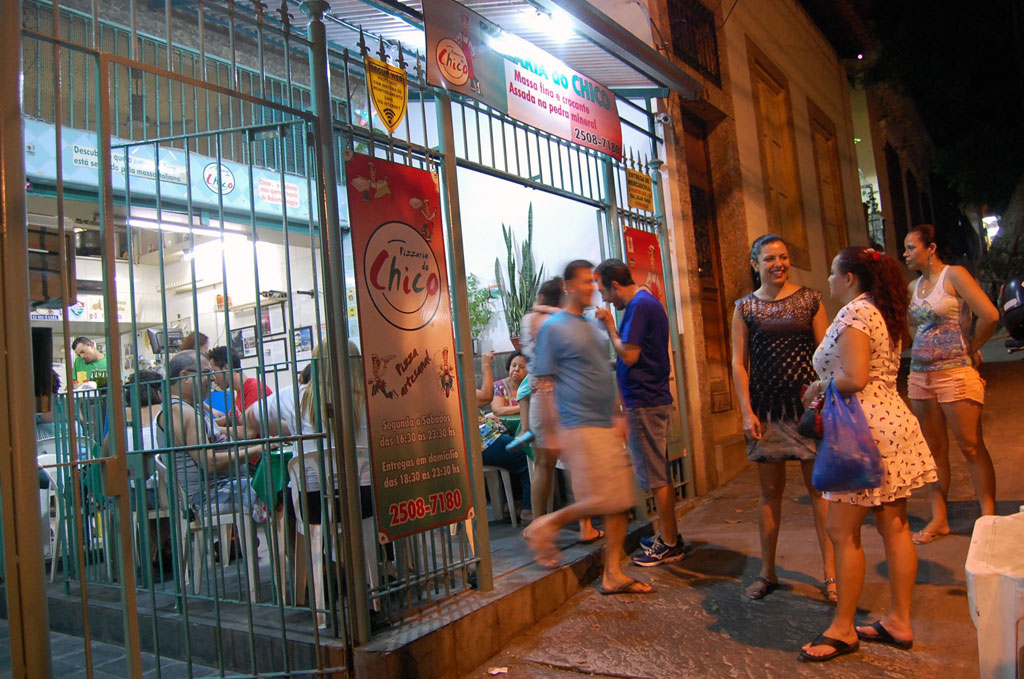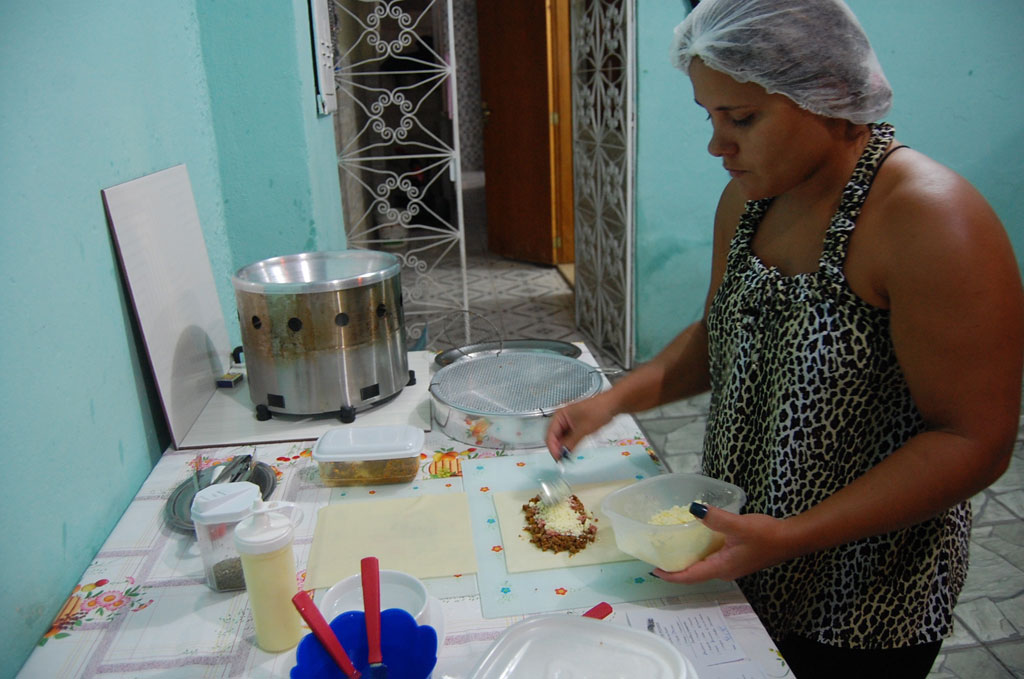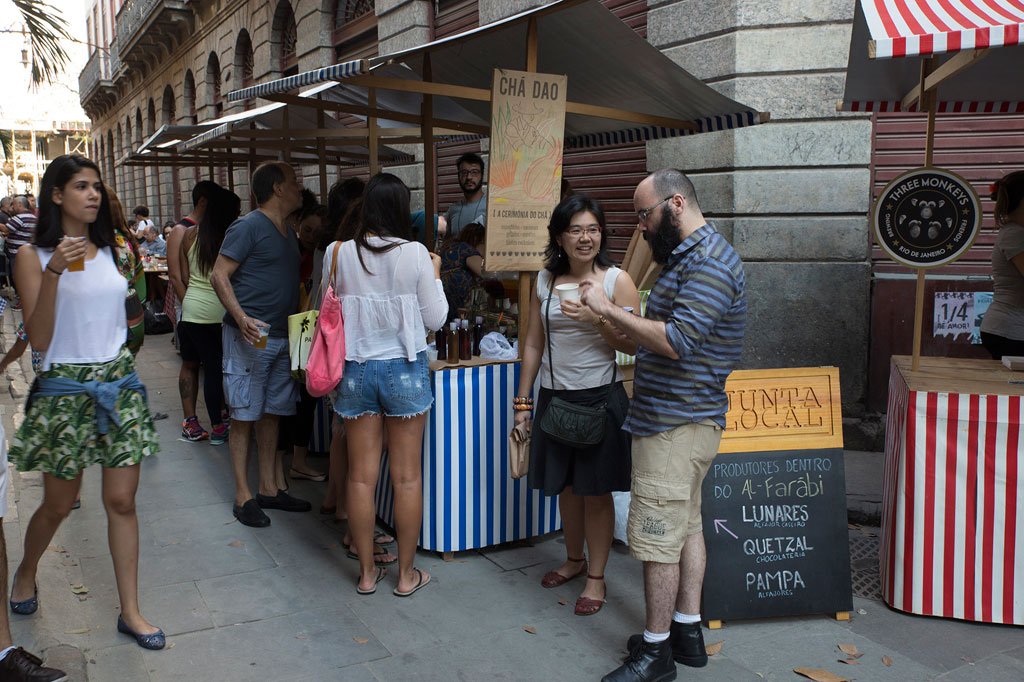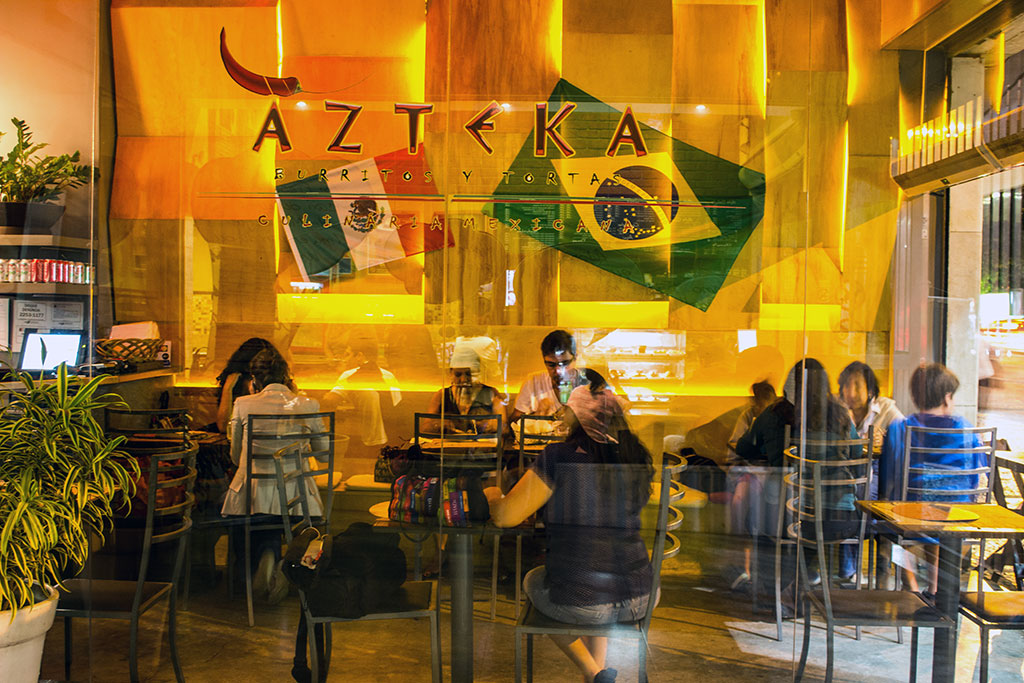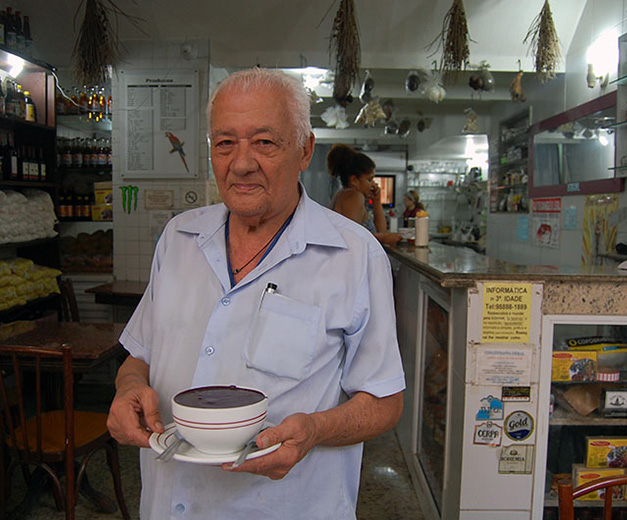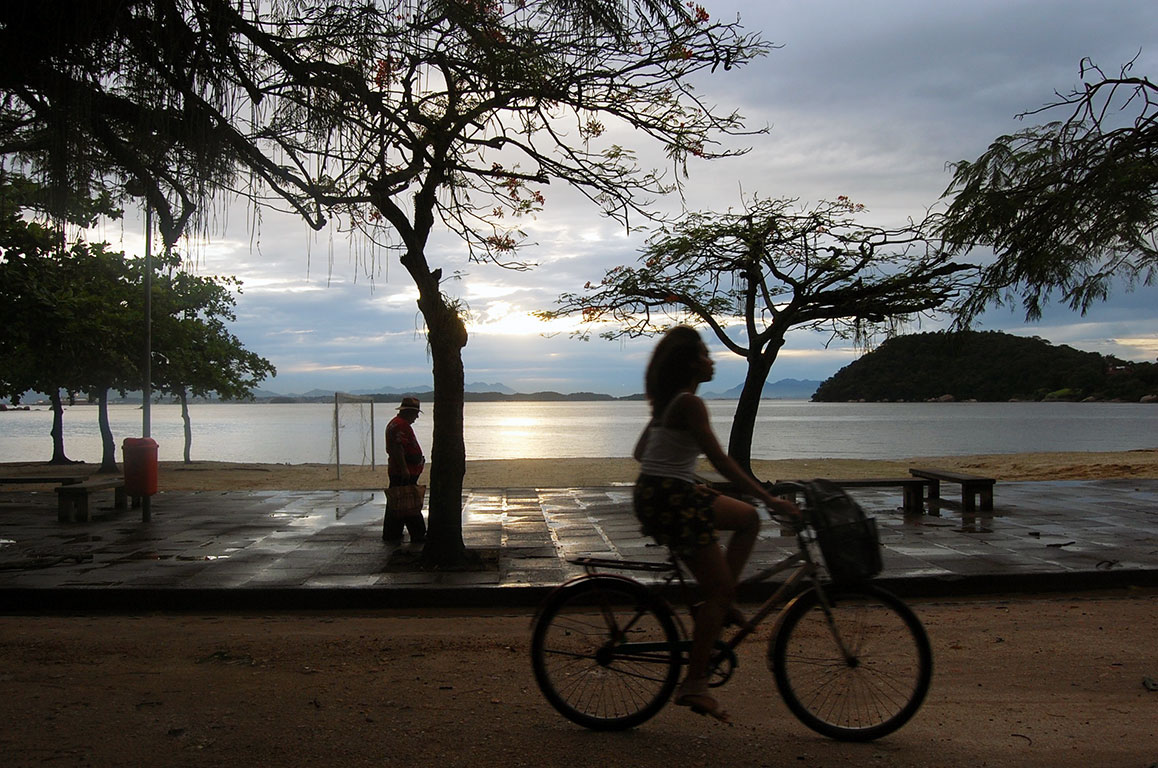We can't find the internet
Attempting to reconnect
Something went wrong!
Hang in there while we get back on track
Search results for "Taylor Barnes"
Rio
Pizzaria do Chico: (Not So) Humble Pie
When they come into this shoebox of a pizzeria that still looks like the pé sujo (“dirty foot”) bar it previously was, clients often ask: But where’s Chico? That’s because they’re expecting Santa Teresa’s most beloved pizza chef to be a rotund and cherry-cheeked grandfatherly figure, perhaps in a red or green apron to make the point hit home. The toothy-grinning and somewhat lanky real Chico is instead someone who likes wearing running shoes to work so he can sprint out of his kitchen to greet the passersby on this cobblestone street for which he feels such affection he turned down a proposal to move to California. (More on that later. It involves Sylvester Stallone.)
Read moreRio
Pastel da Carmen: Midnight Munchies in the City of God
Carmen and Eduardo’s story could be an allegory for the rise and uh-oh moment of Brazil’s new middle class – except their tale is a real one, one that ends with a really nice savory fried pastel that’s become a midnight munchie hit with their neighbors in Rio’s iconic City of God (Cidade de Deus) favela. The pair’s life together started early; they met when Carmen, now 30, was just 12 years old; moved in together when she was 14; and both converted to evangelical Christianity and married in a church when she was 18. They came to the City of God, well-known from the book and film of the same name, looking for a more economical housing option.
Read moreRio
Simsim: Open Sesame
Anyone with observant eyes and a rumbling stomach will notice how newcomers to the city – and their snack foods – are cropping up like the pink beijo-turco flowers that grow in Rio’s forests after a heavy rain. There’s Hasan with his eggplant esfiha pastries amongst the popcorn vendors and candle-lighters at the Nossa Senhora da Glória church of Largo do Machado; energetic and trendy Armin with his falafel in Botafogo; tired Hafez with his boxes of savory snacks, trying to find shade on the Rua das Laranjeiras. Brazilians didn’t need to be told to like Arab food, and now they’re getting a fresh wave of that culture’s already iconic snacks. The bready esfihas and bulgur wheat kibe may be to Brazilians what chicken tikka masala is to Brits, a formerly foreign food now amongst the country’s most ubiquitous for drunk munchers and rushed lunch-breakers alike. Arab migration dates back over a century in Latin America, and Brazil’s Lebanese diaspora is the largest in the world, with a population as high as 10 million. Some 10 percent of Brazil’s congress is of Arab ancestry.
Read moreRio
Diamonds in the Touristy Rough: Azteka
Geography-challenged foreigners often come to Brazil with a vague, ill-informed hope of finding good Mexican food. In Rio, that only happens at Ipanema’s Azteka. In fact, there are few restaurants we find as compelling in the touristy beachside neighborhood as this one, focusing on Tex-Mex cuisine adapted slightly for Brazilian palates. The breadbox-sized eatery was established by Miguel F. Campos and his Bulgarian wife, Aglika Angelova, a professional piano teacher, after the couple scouted out a new country in which to start a new chapter of their lives together. The two met at an organic pizzeria in Chicago.
Read moreRio
Arataca: Amazon Prime
Arataca boasts a title so extraordinary that, were it more widely known, we would expect the modest Copacabana snack bar to be covered with colorful Nossa Senhora do Bonfim blessing ribbons so that generations of pilgrims could light white, tapered candles and lay baskets of offerings at its sidewalk entrance. That designation is: First Açaí – the Amazonian superberry – served in Rio de Janeiro. Local lore says that the slushy, purple drink was first served here 59 years ago, and it was a hit. Nowadays, you’ll see cariocas all over the city with the drink’s trademark ink-stained teeth. Arataca was opened by two immigrants from the northeastern state of Pernambuco. One was in the military and, in his travels through Brazil, he developed a taste for the highly unique cuisine of the country’s north, particularly that of Pará state, considered the gateway to the Amazon region. Pará is also the cradle of the Amazonian berry açaí, which is sold in barrels at riverside marketplaces in the commercial and political capital of the state, Belém.
Read moreRio
Liquid Carnival
In the anything-goes lead-up to Lent, Carnival in Rio is as much about public inebriation and bawdy public displays of affection as it is about extravagant costumes and entertainment. It’s also a time when freelance moneymakers can largely evade municipal guards by dressing up in costumes as fanciful as any carnivalgoer while they sell their homemade alcoholic concoctions unlicensed. Carnival is early this year – Ash Wednesday is February 10 – which means the city’s sinning is in full swing from now onward. Culinary Backstreets scouted out some of the alternative alcohol options you’ll find on the streets this time of year, ones both classic to hundreds of themed street-party blocos and some that seem to be one-of-a-kind offers.
Read moreRio
Zeca's Restaurante: Eating on Rio’s Fantasy Island
Watching residents of Paquetá Island between the turnstiles and gate to get their ferryboat home from Rio’s central Praça XV port is like watching horses chomp at the bit before their stable doors are opened. The 5,000 proud homebodies of Rio’s little car-less island in the center of Guanabara Bay are anxious to get back to it, often pulling tall shopping carts stacked with beer and snacks. There’s only one small grocery store on the island and what gets here, gets here by boat and human hands. The ferry is a destination as much as a journey for those who want to appreciate one of Rio’s most unique little corners. You’ll question the quiet here and remember that this city of 14-lane highways is set to a constant soundtrack of engines and “PORRA!” (Pronounced POU-hah, this is a ubiquitous carioca curse you’ll hear when someone’s mildly upset or surprised, a much saltier version of “damn it!”)
Read more